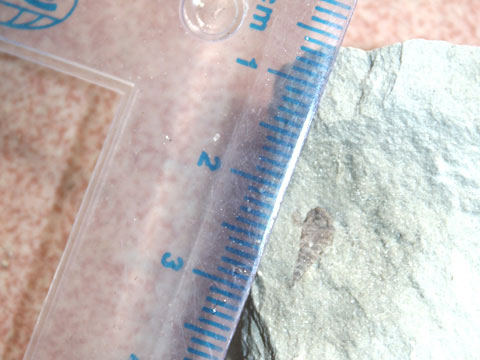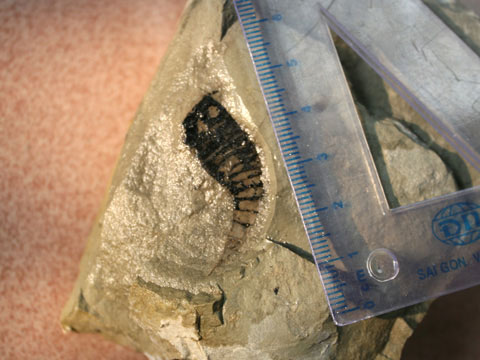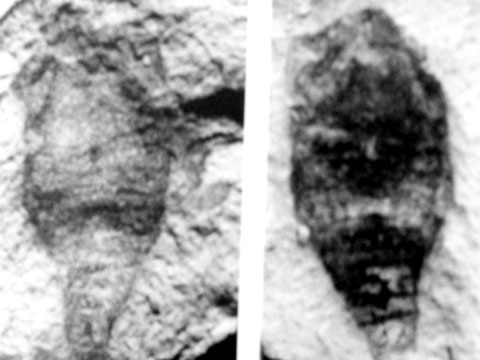Finding scorpion fossils 415 million years ago
A group of scientists has discovered many fossilized remains of the winged scorpion in the white silt layers, at the quarry of Chieng village, Hai Phong.
The group of scientists includes: Dr.Phipippe Janvier (Director of Center for Diversity of Paleontology and Environment, France); Dr. Nguyen Huu Hung (Vietnam Nature Museum), PGSTS. Ta Hoa Phuong (University of Natural Sciences).
The wide-winged scorpion has the scientific name Euryptida , belonging to Arthropoda ; size from a few centimeters to 20 centimeters; but there are also species, the size of over 2 m as representatives of the Pterypgotus genus discovered in Givet sediments (380 - 375 million years ago) of the Devonian century in North America.

The young scorpion of the Scorpion wing is wide.
They are predators, living in fresh and brackish water environments; swimming and clinging to the bottom. The wide-winged scorpion first appeared on Earth in the Ordovician period (500 million years ago), flourishing in the centuries Silur, Devonian, Carbon and disappeared completely in the first half of the Permian (280 million years ago). .

The adult scorpion of the scorpion is wide.
Previously, in 2002, British scientists Simon J. Braddy, Paul A. Selden and TS. Fellow Nhat Truong (Vietnam Institute of Geosciences and Mineral Resources) discovered fossil scorpion for the first time, in siltstone layers in the mountainside to the east of Ngoc Xuyen village, Do Son peninsula. Hai Phong city; including new species Rhinocrcinosoma dosonesis ; confirmed the late Sliur age to early Devonian (415 - 410 million years ago).

Wide wing scorpion Rhinocarcinosoma dosonensis
The discovery of fossils Broad-wing scorpions, along with other fossil groups such as Fossil-phytoplankton, Mismatched hands, Ancient fish, Two-piece shells, Head legs (last time) allow paleontologists age and reconstruct the ancient geographic and environmental circumstances forming sediments containing them in the Northeastern coastal area of Vietnam.
Similar scorpion remains were discovered by scientists in the islands of Quan Lan, Ngoc Vung, Van Canh, Tra Ban, Bai Tu Long Bay, Van Don District, Quang Ninh Province.
- Excavation of giant water scorpion fossils
- Australia found fossils tens of millions of years old
- The 390-million-year-old fossil has claws
- Develop a scorpion robot to serve medical research
- The scorpion causes the opponent to foam and cry until death
- 'Fossil' 3.7 billion years old is once again shocking because it seems to be just normal stone
- The discovery of animal fossils dating to 42 million years in Brazil
- Video: Compare the size of the world's largest scorpion species
- The 'invading' scorpion Brazil, killing hundreds of people
- Finding fossils 'nesting tools' flies
- One more scorpion was discovered in Vietnam
- Peach seeds more than two million years old are the same today
 Discovered an ancient centipede fossil 99 million years old
Discovered an ancient centipede fossil 99 million years old Discovered bat-like dinosaurs in China
Discovered bat-like dinosaurs in China Discovered a 200-year-old bronze cannon of the coast
Discovered a 200-year-old bronze cannon of the coast Discover 305 million-year-old spider fossils
Discover 305 million-year-old spider fossils